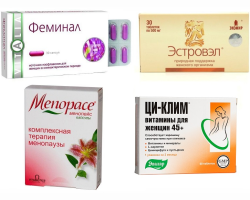Every person should know about the symptoms of meningitis. This is a dangerous disease, so it is important to make a diagnosis in a timely manner and correctly.
Content
- Meningitis infectious virus - what it is, species, etiology: viral, bacterial, fungal, serous, purulent
- Meningitis in adults and children: causes
- First symptom of meningitis: temperature
- Acute meningitis - signs in an adult, as to recognize, the incubation period: 8 symptoms
- Signs and symptoms of meningitis in children up to a year, 2, 3, 4, 5, 6, 7-10 years old, adolescents: how to recognize?
- Meningitis without symptoms in adults and children, without temperature: in what cases can it be?
- Diagnostics: How is an analysis of cerebrospinal fluid for meningitis?
- Meningitis: How is treatment carried out?
- Meningitis - consequence, complication: symptoms after meningitis, rehabilitation
- Meningitis: Prevention
- Video: All you need to know about meningitis
Everyone heard about such a disease as meningitis, but do you know about the dangers that may occur in the absence of treatment? In particular, the bacterial strain of meningitis requires urgent medical care in the form of antibiotics. When a person develops this disease, inflammation and infection of the protective shells of the brain and spinal cord occurs.
Meningitis infectious virus - what it is, species, etiology: viral, bacterial, fungal, serous, purulent

Meningitis - This is an infectious disease caused by inflammation of the shell of the brain or spinal cord. It is transmitted by airborne droplets. Children from 1 to 5 years old are most susceptible to the disease, since their immunity is still weak. Meningitis can also appear in a newborn: this is due to the fact that he also receives an infection from his mother. This disease may have different etiology. Here are the types of meningitis:
- Bacterial - The disease cause different types of bacteria.
- Fungal - It develops as a result of mushrooms entering the body: candidates, cryptococci and others.
- Viral - Viruses are developing pathology: mumps, herpes, influenza and others like it.
In addition, it may develop mixed shape This disease, if several types of pathogens have come into the body at the same time.
Meningitis can be like an inflammatory process - purulent or serous. Unlike purulent, serous is not accompanied by cell necrosis and the formation of purulent mucus, so it has an easier course and a favorable prognosis.
By origin - primary (develops as an independent pathology) or secondary (consequence of another disease).
According to prevalence:
- Spinal - Inflammation occurs in the membranes of the spinal cord.
- Consectal - Inflammation is localized in the upper brain, then this is convexital meningitis. With inflammation of the lower part of the brain, basal meningitis develops.
- Cerebrospinal - covers both the brain and spinal cord.
What are the reasons for the development of this disease? Read further.
Meningitis in adults and children: causes

The reason for the development of meningitis in adults and children can be bacteria, mushrooms or viruses different etiologies. Pathology appears due to infection in the body: E. coli, meningococci, tuberculosis bacteria. You can get infected with:
- Insects
- Rodents
- Dirty water
- Food
Meningitis can also occur after a skull injury, inflammation of the lungs or chronic diseases. During the strong hypothermia of the body The tension of immunity is reduced. This can be a provoking factor for the development of any of the types of this disease.
First symptom of meningitis: temperature

The very first symptom of meningitis is a high body temperature. It can reach high rates in a short period of time. Within one or two days, the temperature can rise to 39-40 degrees. A severe headache, weakness joins this symptom.
Remember: Meningitis immediately becomes acute. Body temperature rises sharply to 39 ° C., headache in the nape, vomiting, aches in the body, rapid heartbeat, convulsions.
Children have epileptic seizures. Characteristic rashes similar to small bruises appear, in this case, you need to urgently call an ambulance: this characterizes a difficult case. The disease can begin with the usual SARShowever, it develops during 2-3 days And then the symptoms of colds flow into more serious ones. The diagnosis can be determined only after passing blood tests and cerebrospinal fluid.
Acute meningitis - signs in an adult, as to recognize, the incubation period: 8 symptoms

Bacterial disease does not develop as often as viral meningitis. Although it is important to treat both types of illness, its viral version is not fatal and has less pronounced symptoms. The incubation period of the disease lasts 2 to 5 days. This is a short time, therefore it is believed that such a pathology is developing rapidly. The manifestations of both types of meningitis are almost the same. Here are the 8 most recognizable signs that you need to know:
Strong headaches:
- Appear suddenly. This is a symptom of many diseases, but if headaches are extremely serious and are accompanied by intense pain in the neck, you can deal with meningitis.
Sensitivity to bright light:
- If you notice that you suddenly have sensitivity to artificial lighting or even the light of the sun, you may well be infected with meningitis.
- This sensitivity can cause pain and discomfort.
Persistent skin rashes:
- People suffering from meningitis often have rashes on the skin, usually found on their hands.
- If you notice this symptom, conduct a slight home test to determine if your rash is caused by meningitis.
- Press the wall of a glass glass to the rash tightly, paying attention to how the skin color changes - it becomes lighter.
- A good sign will be if the rash also changes color under the pressure of glass - this means that its cause is not meningitis.
- If you do not notice that the applied pressure somehow affects the color of the rash, then you may well have this disease.
Strong and sudden fever:
- If you are faced with a fever, which seems to have appeared from nowhere, you can deal with this disease.
- An accompanying disease of fever is not only sudden, but also very serious. If the matter is in meningitis, body temperature is invariably growing, and it is very difficult to knock it down.
- Since this condition is often a symptom and many other diseases, pay attention to whether it is accompanied by any other manifestations of meningitis.
Nausea and loss of appetite:
- As a rule, when infected with this disease, severity in the stomach and lack of appetite occur.
- You can also feel the urge to vomit or strong nausea.
Inability to straighten your legs:
- Often, with meningitis, people experience problems with extension of the legs.
- A person can suffer, lying with his feet bent at his knees, and even an attempt to strain them, does not lead to the desired result.
- Difficulties also arise when trying to completely spread the legs.
Rigidity of the occipital muscles:
- You may notice rigidity in the occipital muscles, if infected with meningitis.
- The occipital muscles are located in the back of the head.
- This condition causes extreme discomfort, and you may notice that an infected person lies in the same position with the head thrown back to the back.
Dangling in the eyes:
- Meningitis caused by bacteria and viruses can create difficulties with vision.
- Perhaps you will not be able to focus it and even see a double image.
Important: Contact the doctor if you notice one or more symptoms of meningitis in yourself or the other person. It is important to treat this disease under medical supervision, since bacterial infection can be especially dangerous and even threaten life.
Signs and symptoms of meningitis in children up to a year, 2, 3, 4, 5, 6, 7-10 years old, adolescents: how to recognize?

Children suffer from meningitis more often than adults, since their immunity is weak. In addition, babies can become infected with the disease from the mother. Symptoms and signs of meningitis in children up to a year, as well as 2, 3, 4, 5, 6, 7-10 years old And adolescents are almost the same as adults. Here are a few distinctive symptoms that will help to recognize the pathology in the child:
- When this disease develops in infants, they may have edema or seal on the fontanel - the space between the bones in the skull.
- Children with meningitis instinctively begin to stay away from bright lights due to sensitivity to light. This causes tearfulness and discomfort.
- Children who develop meningitis shakes and chills, because they feel a strong cold, even if the ambient temperature is quite high.
- A child with meningitis constantly lies with his head thrown back. It is practically pressed to the back due to the rigidity of the occipital muscles.
- Even with outside help, the child cannot straighten his legs in his knees. He lies with bent legs all the time.
Remember: If you notice the first symptoms of a child’s pathology, urgently call an ambulance or a doctor at home. Processing can threaten the health and life of the baby!
Meningitis without symptoms in adults and children, without temperature: in what cases can it be?

An increase in temperature and the development of other features is the answer of the immunity to the development of the disease in the body. But there is also meningitis without symptoms and temperature in adults and children. In what cases can it be? Here's the answer:
- This can be a sign of a viral form of the disease. The incubation period in this case is very short - 2-3 days. The virus develops rapidly and does not show itself.
Viral infection is easier than bacterial. But doctors often confuse it with SARS, so they make a diagnosis incorrectly, which leads to the development of complications with improper treatment.
To recognize meningitis, which proceeds without temperature, the doctor must pay attention to other symptoms:
- Weakness
- Vomiting
- Refusal of food
- Drowsiness
Timely and correct diagnosis will help prevent the layering of a bacterial infection, which often happens with a weakened immune response of the body.
Diagnostics: How is an analysis of cerebrospinal fluid for meningitis?

In order to correctly diagnose, it is necessary to diagnose. With meningitis, a cerebrospinal fluid is analyzed, which is taken from the spinal cord using lumbar puncture. This diagnostic method helps separate the viral nature of the pathology from bacterial.
Additionally, the patient is prescribed:
- Blood test for electrolyte composition and biochemistry
- Liver tests
- Electromyography
The doctor may additionally prescribe urine analysis, make an MRI or conduct another diagnosis.
Meningitis: How is treatment carried out?
Treatment occurs only in the hospital. There, the patient should undergo antibacterial therapy: drugs are administered intravenously or into the spinal cord with urgent necessity. With meningitis, intoxication of the body occurs, therefore, detoxification drugs are also administered. Anesthetic drugs and drugs that reduce the risk of brain edema are administered.
Meningitis - consequence, complication: symptoms after meningitis, rehabilitation

The consequences or complications of meningitis are serious. Therefore, it is so important to make a timely and correctly diagnosis. Even after the treatment, recovery does not occur immediately. During 7-14 days A person can feel weakness, loss of performance, headaches, worsening coordination in space.
Other symptoms after meningitis may also be disturbed, especially if it proceeds without temperature. For children, such a disease is more dangerous, as they can develop:
- Steaminess
- Development in development
- Poor focus on the most simple tasks
- Strabismus
- Bad memory
The rehabilitation of this disease includes such measures (they should be carried out after the treatment of meningitis):
- Diet therapy: proper nutrition will help restore strength after illness. It is important to prepare the dishes for steam or cook, but not fry. So that the gastrointestinal tract is not overloaded, you do not need to overeat. Eat in small portions, 3-5 times a day.
- Physiotherapy: ordinary massage and using hardware techniques. For example, electrophoresis with vitamins or drugs helps to relax or vice versa, to stimulate individual muscle groups.
- Exercise therapy (physiotherapy physical education): restoration of movement skills, training of individual links of a motor act.
- Ergotherapy: helps to adapt after the disease. The patient will be able to restore coordination and amplitude of movements, adapt the existing restrictions that appeared as a result of the disease, to ordinary habits and lifestyle. A person will be able to fully exist and enjoy life.
- Cognitive therapy: classes that help restore attention, memory and logic.
Recovery after such a disease is a long process that requires a special approach. Doctors help the patient with their knowledge and experience, and relatives of the patient - perseverance, patience and sequence.
In order to prevent the development of the disease, and to avoid complications, it is necessary to engage in its prevention. Read further.
Meningitis: Prevention

For prevention, it is necessary to undergo vaccination every 3 years. The vaccine will protect a person from meningitis with a probability of 80%. It should be done for children who are older than a year and a half. It is also necessary to thoroughly wash your hands after the street and to maintain immunity lead a healthy lifestyle: eat right, play sports and temper.
Meningitis is a deadly disease, if not treated it in a timely manner. Nearly 20% of peoplewho have transferred this disease, become disabled. Hearing loss is the most common complication. They also lose their memory, limbs, difficulties arise in training and impaired gait, coordination, renal failure and brain damage are possible. Sometimes the consequences may have a death. Lead a healthy lifestyle, eat correctly, walk a lot to reduce the risks of infection with meningitis.
Video: All you need to know about meningitis
Read on the topic:








A terrible disease, especially its consequences. They say you can be disabled to stay or altar outcome in general. Take care of yourself and your children, do not overcool, strengthen the immune system. Vitamin complexes are especially good, I give children vitamins of immunity plus. Hardening, sport.